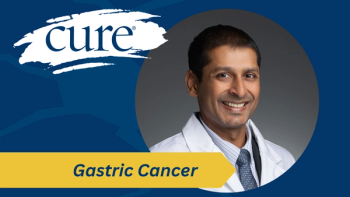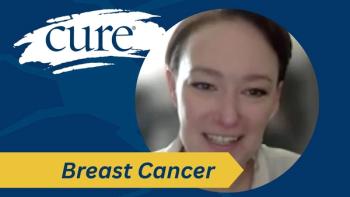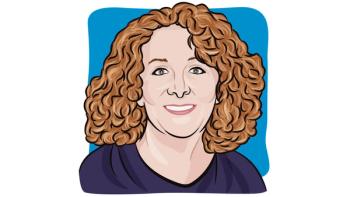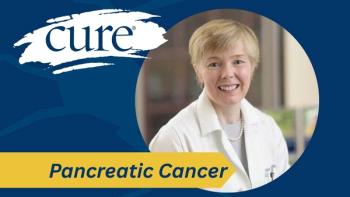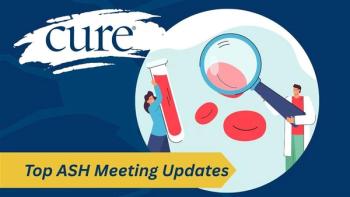
When the Light at End of Tunnel is Terrifying: Haunting ‘What Ifs’ After Chemo Ends
I have only one more chemotherapy treatment left, but instead of being excited, I’m afraid that this final brutal treatment may be the end of me.
On receiving my cancer diagnosis, my oncologist told me I’d have to endure six chemo cycles of five days every month for half a year. That or die in three months.
I choose to live.
The first cycle was rough with the usual symptoms like nausea and fatigue. But within a few days, I was up and running around doing the things I normally did. That early in the treatment, I didn’t lose a pound, nor did I lose a single hair on my head.
“Bring it on!” I challenged the doctors and the cancer. “This is going to be a piece of cake.”
But I quickly learned that each cycle takes a toll, knocking you down only to require the next several weeks to rebuild so that you can go back in and get knocked down again. At times I felt like a scrappy boxer who never wins a fight but keeps getting back up for the count of 10.
A graph of the ups and downs would look like a roller coaster ride. Each cycle had its low. Unfortunately, the lows seem to get worse from cycle to cycle, requiring more and more time to recover. After my last cycle (fifth) it took me 10 days to feel normal again. Even then, that new normal was far from my pre-cancer normal. I was weak all the time. Stairs were my enemy. I lost more than 10% of my body weight — all of it muscle. My face was gaunt, my eyes sunken. All of my hair was gone. If you ask me, I look like one of those ugly, wrinkly hairless cats.
I think it has to do with the accumulation of the effects of chemotherapy. The negative toll on the body builds on itself from cycle to cycle. The bar is constantly raised or lowered.
I’m scheduled to go in for my last cycle in a few days. On the one hand, I should be happy that it’s almost over. No more twice-weekly blood draws. No more spinal infusions. No more bags of chemo. No more bland, institutional meals. They say my tumor has been gone since my second or third cycle. The cycles since have been preventative, just in case a single B-cell takes hold somewhere else in my body and starts to grow again.
But I’m not elated; I’m fearful. I’m terrified that this last hospitalized cycle will be the end of me, not because of the cancer, but because of the toxic stew called chemotherapy that the nurses pump into my veins 24 hours a day for five days. I have come to understand how a short-timer soldier in a foxhole must feel with his orders to go stateside folded neatly in his pocket, but who can’t help wondering if after surviving months of brutal combat, if today is the day he buys the farm.I’ve come to realize that “close to the end” does not necessarily mean you will make it to the end.
The last cycle was hard. I was so certain that I was going to die midway during my recovery period that I video-recorded a farewell message for my family. I needed them to know how much I loved them and how I wish I was still here with them. I apologized for leaving them for the rest of their lives, my presence only a fading memory. I watched the video again today. I look like a skeleton, like a pale, bald-headed ghost. I struggle to catch my breath, even to speak. Clearly, I was at the bottom of the worst cycle so far. Death stood invisibly beside me with a boney hand on my shoulder.
“Almost time,” his forked tongue whispered in my ear.
I have come to fear this last cycle the most. My mortality is always on my mind. Death is never far away. How much further can my body be knocked down and still recover? What if organs start to fail? What if I stopped now after five cycles? What if I just didn’t go back? Would it matter? Is there a measurable difference in the survival rate of patients who completed five cycles instead of six? Is it better that I stop and live and be with my loved ones and friends, or do I risk one last cycle that might spell my demise? Would I survive the tumor but perish from the treatment?
Always in the back of my mind was the doctor’s constant refrain, “We’re killing you to save you.” They weren’t joking. They took me to the precipice.
I wrestled mightily with these questions. I spoke to my wife, friends and even clergy. I told them how the light at the end of the tunnel terrified me. Was the beckoning light good or bad? Should I walk into it with eyes open or closed? “What if?” became my common complaint. I tried to persuade my oncologists that I was willing to take the risk and stop at five. They said I was gambling with my life, that the numbers show that a full protocol of six cycles was the best chance I had. They were probably right.
Maybe I was being melodramatic. In many ways, I endured the past five cycles better than most, or so the doctors and nurses tell me. The human body is frail but resilient. Life fights to exist. My body had fought the good fight. But was there still one last fight left in me?
In the end, I decided to heed their advice. For my family’s sake, I’d suffer the sixth cycle. For them, I’d take the risk. But I warned everyone that “if I die from the chemo this time, I’ll be really mad.”
They say everyone goes through cancer in their own way, with their own experience, even though in many ways it is all the same. I have nothing to measure my experience against. I have not known another person who has gone through cancer from beginning to end. But, I imagine everyone who has ever gone through cancer treatment asks some of the same questions: “Should I quit at some point? What is the trade-off? When is enough . . . enough? Inevitably, questions about quality of life arise. “What future awaits me? Who will I be?”
As I said previously, I go back into the hospital in a few days. It is my intent to write about my final chemo experience and its impact on my already-weakened body. Most of all, I hope to write about the hard road of recovery that awaits me. I welcome the challenge. I’m ready to begin. In a way, I’ve been ready since the first treatment.
I hope to share with you what lessons I learned, if any. Only time will tell. Time is all we ever truly have. My time. Your time.
For more news on cancer updates, research and education, don’t forget to

